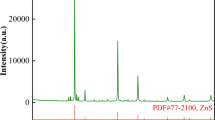Abstract
In this study, the contact effects between mesophile bacteria and minerals were observed to enhance the bioleaching kinetics, which demonstrated that the adsorption of bacteria to mineral surfaces could improve the dissolution of arsenic and copper. The microstructure results also demonstrated that after the contact bioleaching, residue surfaces were rougher and with more corrosion bars and pits. Compared to contact oxidation approach, ferric ions, acting as the only oxidants in the non-contact bioleaching process, play a more important role in the copper extraction and arsenic dissolution, which is consistent with the previous works about indirect leaching mechanism. Due to the presence of various mesophiles in the contact oxidation, their activities and corresponding preferences for energy sources influenced by temperature were observed, causing differences in the sulfides’ dissolution: ferrous ions were inclined to be oxidized biologically at 30 °C, whereas sulfide minerals, including enargite, were preferentially oxidized at 45 °C.







Similar content being viewed by others
References
Wu Z L, Hydrometall China 37 (2018) 349. https://doi.org/10.13355/j.cnki.sfyj.2018.05.003
Suyantara W P G, Berdakh D, Miki H, Hirajima T, Sasaki K, Ochi D, and Aoki Y, Int J Min Sci Technol 33 (2023) 703. https://doi.org/10.1016/j.ijmst.2023.01.002
Yu J, Huang W L, Wang B, Yuan Y, Fang Z, and Cui Y R, Chin J Rare Metals 42 (2018) 1093. https://doi.org/10.1016/j.ijmst.2023.01.002
Jin K, Central South Univer (2024). https://doi.org/10.27661/d.cnki.gzhnu.2022.003626
Rivera-Vasquez B F, and Dixon D, Hydrometallurgy 152 (2015) 149. https://doi.org/10.1016/j.hydromet.2014.12.012
Sasaki K, Takatasugi K, Ishikura K, and Hirajima T, Hydrometallurgy 100 (2010) 144. https://doi.org/10.1016/j.hydromet.2009.11.007
Watling H R, Hydrometallurgy 84 (2006) 81. https://doi.org/10.1016/j.hydromet.2006.05.001
Wu Z L, Wu Z, and Zhu Y G, Chin J Rare Metals 39 (2015) 735. https://doi.org/10.13373/j.cnki.cjrm.2015.08.010
Fantauzzi M, Atzei D, Elsener B, Lattanzi P, and Rossi A, Surf Interface Anal 38 (2006) 922. https://doi.org/10.1002/sia.2348
Fantauzzi M, Rossi G, Elsener B, Loi G, and Rossi A, Anal Bioanal Chem 393 (2009) 1931. https://doi.org/10.1007/s00216-009-2613-3
Wu Z L, Kong W Z, and Zhu Y G, Chin J Rare Metals 39 (2015) 1123. https://doi.org/10.13373/j.cnki.cjrm.2015.12.010
Corkhill C L, Wincott P L, Lloyd J R, and Vaughan D J, Geochim Cosmochim Acta 72 (2008) 5616. https://doi.org/10.1016/j.gca.2008.09.008
Escobar B, Huenupi E, Godoy I, and Wiertz J V, Biotechnol Lett 22 (2000) 205. https://doi.org/10.1023/A:1005610226677
Elkina Y A, Melamud V S, and Bulaev A G, Microbiology 90 (2021) 78. https://doi.org/10.1134/S002626172006003X
Kong W Z, Wu Z L, and Liu J Y, Nonferrous Metals (Extr Metall) 08 (2014) 14.
Liu J Y, and Xin J J, Metal Mine 501 (2018) 13. https://doi.org/10.19614/j.cnki.jsks.201803003
Sasaki K, Takatsugi K, and Hirajima T, Hydrometallurgy 109 (2011) 153. https://doi.org/10.1016/j.hydromet.2011.06.008
Takatsugi K, Sasaki K, and Hirajima T, Hydrometallurgy 109 (2011) 90. https://doi.org/10.1016/j.hydromet.2011.05.013
Lee J, Acar S, Doerr D L, and Brierley J A, Hydrometallurgy 105 (2011) 213. https://doi.org/10.1016/j.hydromet.2010.10.001
Choudhury S, and Chatterjee A, Arch Microbiol (2022). https://doi.org/10.1007/s00203-022-02874-1
Chen Y, Northeast Univer (2022). https://doi.org/10.27007/d.cnki.gdbeu.2018.001248
Sand W, Gerke T, Hallmann R, and Schippers A, Appl Microbiol Biotechnol 43 (1995) 961. https://doi.org/10.1007/BF00166909
Schippers A, and Sand W, Appl Environ Microb 65 (1999) 319. https://doi.org/10.1128/AEM.65.1.319-321.1999
Lengke M F, and Tempel R N, Geochimica et Cosmochimica Acta 69 (2005) 341. https://doi.org/10.1016/j.gca.2004.06.032
Vera M, Schippers A, Hedrich S, and Sand W, Appl Microbiol Biotechnol 106 (2022) 6933. https://doi.org/10.1007/s00253-022-12168-7
Sand W, Gehrke T, Jozsa P-G, and Schippers A, Hydrometallurgy 59 (2001) 159. https://doi.org/10.1016/S0304-386X(00)00180-8
Rohwerder T, Gehrke T, Kinzler K, and Sand W, Appl Microbiol Biotechnol 63 (2003) 239. https://doi.org/10.1007/s00253-003-1448-7
Ojumu T V, Petersen J, and Hansford G S, Hydrometallurgy 94 (2008) 69. https://doi.org/10.1016/j.hydromet.2008.05.047
Wu Z L, Zou L C, Chen J H, Lai X K, and Zhu Y G, Int J Miner Process 149 (2016) 18. https://doi.org/10.1016/j.minpro.2016.01.015
Acknowledgements
The authors would like to acknowledge the financial support from the National Natural Science Foundation of China (Grant No. 51504071, 51474075) and Horizontal Technical Contract—Research on Optimization of Electrowinning Process Technology for Zijinshan Copper Wet Process Plant (No.2023530101000288).
Funding
National Natural Science Foundation of China, 51504071, Buming Chen, 51474075, Buming Chen and Horizontal Technical Contract—Research on Optimization of Electrowinning Process Technology for Zijinshan Copper Wet Process Plant, 2023530101000288, Buming Chen
Author information
Authors and Affiliations
Corresponding authors
Ethics declarations
Conflict of interest
There are no conflicts to declare.
Additional information
Publisher's Note
Springer Nature remains neutral with regard to jurisdictional claims in published maps and institutional affiliations.
Supplementary Information
Below is the link to the electronic supplementary material.
Rights and permissions
Springer Nature or its licensor (e.g. a society or other partner) holds exclusive rights to this article under a publishing agreement with the author(s) or other rightsholder(s); author self-archiving of the accepted manuscript version of this article is solely governed by the terms of such publishing agreement and applicable law.
About this article
Cite this article
Jiang, C., Chen, B., Guo, J. et al. Comparative Study of Microbial Contact Effect on Complex Copper Sulfide Concentrate Containing Enargite, Covellite and Digenite. Trans Indian Inst Met (2024). https://doi.org/10.1007/s12666-024-03321-z
Received:
Accepted:
Published:
DOI: https://doi.org/10.1007/s12666-024-03321-z




